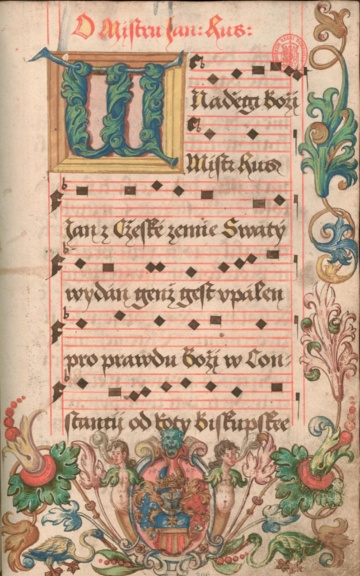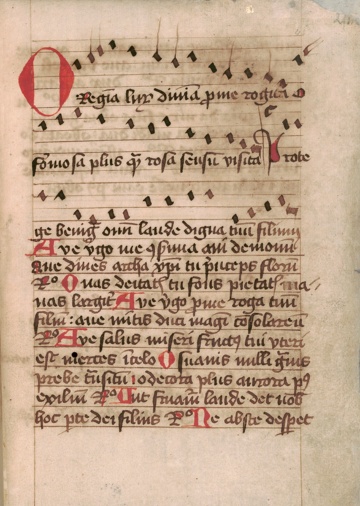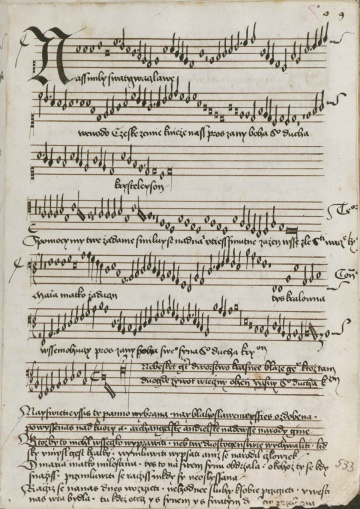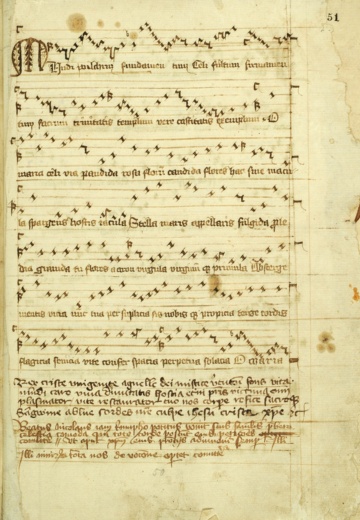Song
From the end of the 13th century, the Czech lands had been witness to intensive development of the culture of Latin songs and to a lesser extent Czech and German songs. While in the oldest phases we can trace Aquitaine influences, the products of the 14th century follow primarily the spiritual and secular production of the South German regions. At the latest from the second half of the 14th century, Czech sources depict two types of monophonic song. The first favours generous dimensions, a single verse, and rich melisma combined with syllabic, modally rhythmicised sections. This includes the compositions ascribed to Záviš. The second type are strophic songs – cantiones – the rhythmic aspect of which is often highly complex, but where the melody exhibits a clear melodic in "major" modes that tempts one to reflect on the influence of folk music on spiritual Latin culture. In Utraquist Bohemia in the 15th century, strophic cantiones predominate, becoming an integral part of the manuscript tradition, while large melismatic songs inspired by the German Sangspruchdichtung quickly fall out of fashion. The filial relationships between important manuscript sources and defining the relationship of the Czech lands to other regions of (not just) Central Europe remain open questions. Over the course of the 15th century, the area of polyphonic setting to music of song lyrics grows, comprising a broad range of forms and styles from simple "conducted" songs through to cantilenas with a more pronounced melodic voice, Central European variations on secular songs of French or Italian origin (piroletum, katchetum, trumpetum, stampetum), very popular canons - rotula and even polyphonic versions of songs in the Franco-Flemish style.
Florilegium provides mini-editions illustrating a variety of shades of the Czech and Central European song tradition.







